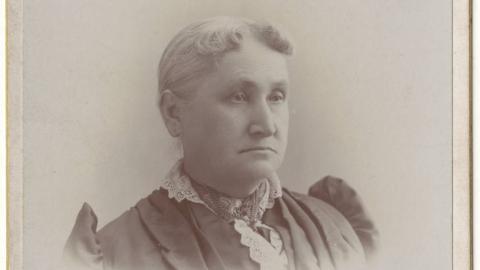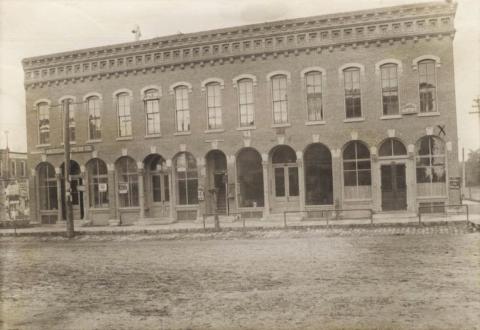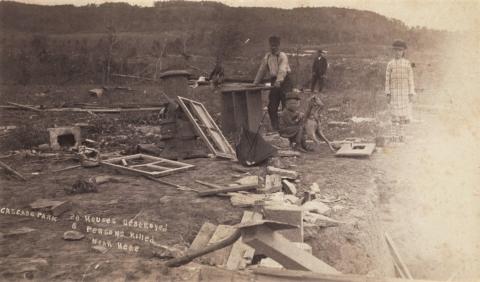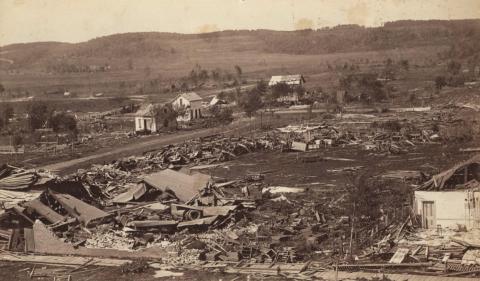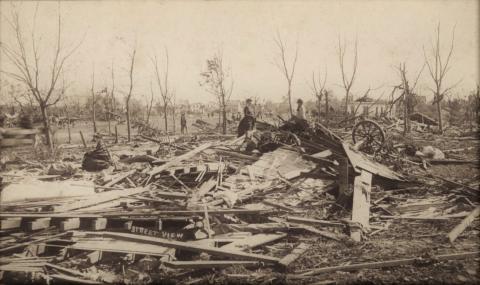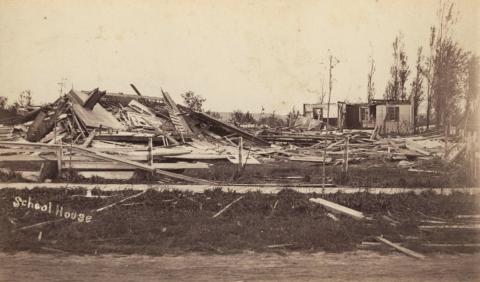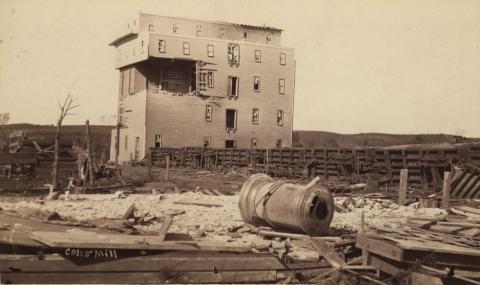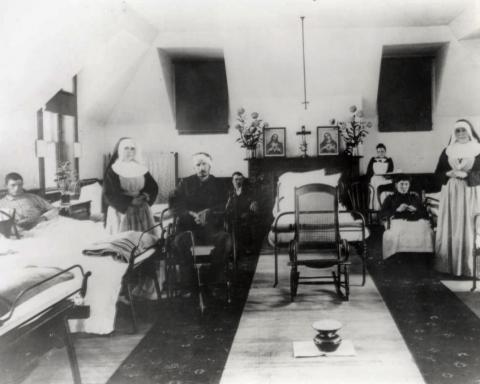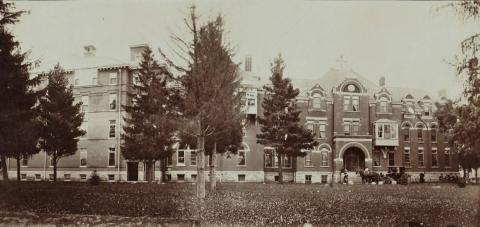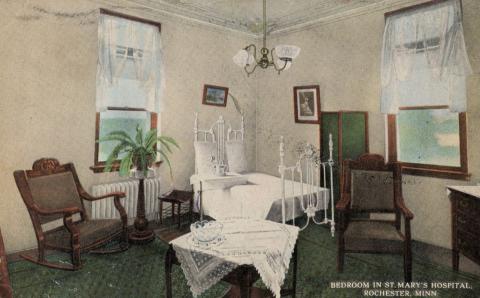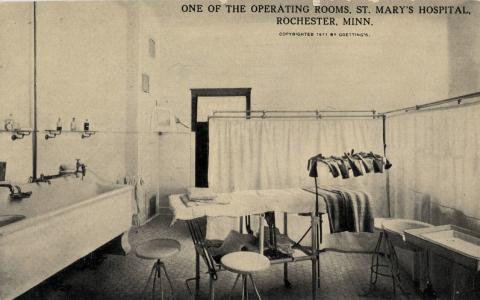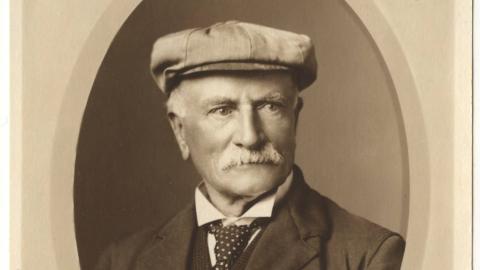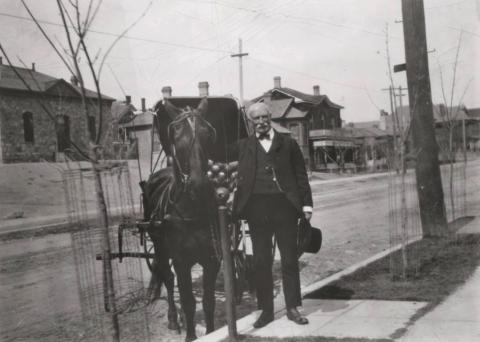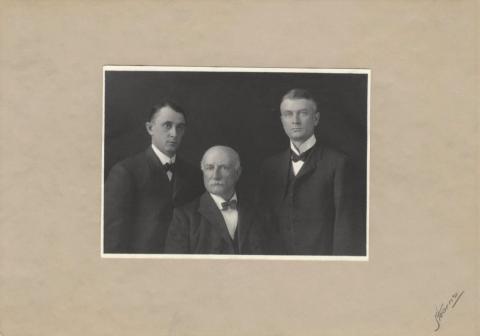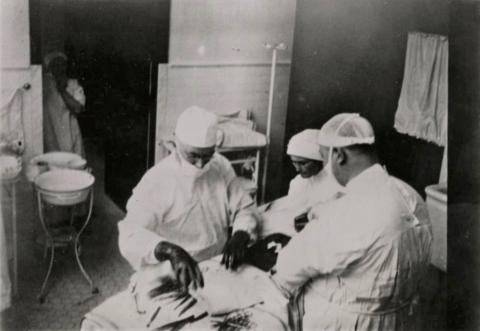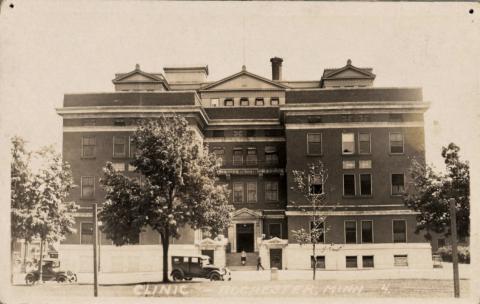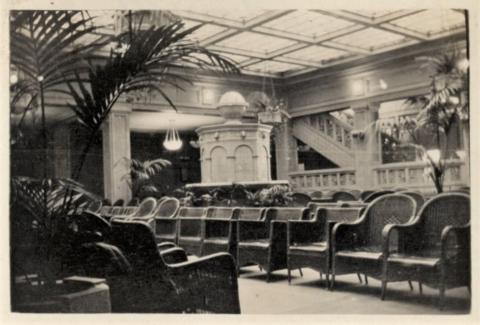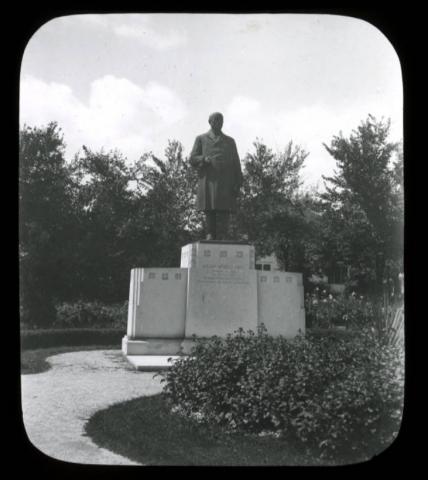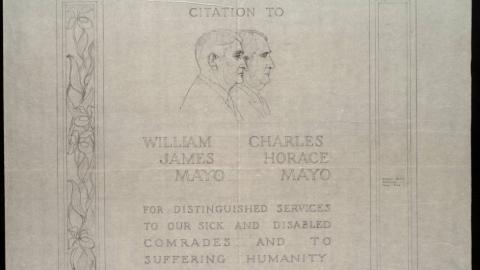Primary Source Set
by Stephanie Hess, Digital Curator, Minnesota Digital Library
On the evening of August 21, 1883, a devastating tornado struck Rochester, Minnesota. The tornado destroyed much of the town and its surroundings, killed 20-30 people, and injured 200 others.
At the time, Rochester did not have a hospital. Survivors were taken to temporary hospital where Dr. William Worrall (W. W.) Mayo, his son Dr. William J. Mayo, and other Rochester doctors cared for them. Nuns from the local Sisters of St. Francis convent served as nurses. After the tornado, Mother Alfred Moes of the Sisters of St. Francis realized that Rochester should have a permanent hospital. She convinced Dr. W. W. Mayo to help her start one.
By 1889, Mother Alfred and the Sisters of St. Francis had raised enough money to build a hospital in Rochester. They named it St. Mary's Hospital. Dr. W. W. Mayo served as the superintendent of the hospital, and his sons Dr. William Mayo and Dr. Charles Mayo were the hospital's first doctors. In 1914, the Mayos built a permanent facility for their medical practice and called it the Mayo Clinic. St. Mary's Hospital and the Mayo Clinic later merged to become the medical facility it is today.
Since the beginning, Mayo doctors worked together in teams to treat their patients. This team-based approach was one of many medical innovations developed by the Mayo Clinic, along with employing specialized doctors, developing advanced and complex treatments, and centralizing medical records. What began as a response to a local disaster in a small Minnesota city has grown into a world-renowned medical center that has changed medical practice and now reaches people all over the world.
Discussion Questions & Activities
- Before the 1880s, Rochester was a small city in southeastern Minnesota involved in trading wheat. Now it is famous as "Med City." What changed?
- Open one of the tornado damage photos (#4-10) in MDL. Zoom in and examine the scene. What is going on in this photo? What do you see that makes you say that? What more can you find? Compare it with another disaster photo. How are they the same? How are they different?
- Most of the tornado aftermath photos were taken by Charles A. Tenney of Winona, Minnesota. Why did he take these photos? Who did he take these photos for? Why did he come from another city to take the photos?
- Imagine your hometown was hit by a tornado like this one. How would you feel? What would you do first? Check out the tornado damage photos (#4-10) to put yourself in the scene.
- Identify the people who came up with the idea for a hospital in Rochester. Why did they think it was a good idea? What were their roles?
- Imagine your parent is a doctor, like Dr. W.W. Mayo. Would you want to be a doctor like his sons were, or would you want to do something completely different? Why or why not?
- Dr. W. W. Mayo and his sons Dr. W. J. and Dr. Charles Mayo were honored by the city of Rochester with a statue and by the country with a plaque. Why?
- How has the practice of medicine changed since the 1880s? How is it the same?
- As a class, imagine that part of your town was just destroyed by a tornado. Identify the needs and wants of the community and assign roles for each student to meet those needs and wants. For example, a clean-up crew, builders, nurses, fundraisers, temporary housing, etc. Come up with a disaster relief plan to help guide your community in future disasters like this one.
eLibrary Minnesota Resources (for Minnesota residents)
Finkel, Ed. “Brand of Brothers.” Modern Healthcare, vol. 39, no. 12, Mar. 2009, p. H4.
Hansel, Jeff. “150 Years: Franciscan Sisters Integral to Mayo Clinic’s Development.” Post-Bulletin (Rochester, MN), 7 May 2014.
"Mayo Clinic Founded, 1889." Historic U.S. Events, Gale, 2014. Gale In Context: High School.
“Mayo (Family).” Funk & Wagnalls New World Encyclopedia, Jan. 2018, p. 1.
"Mayo, William James 1861-1939 and Mayo, Charles Horace 1865-1939." American Decades, edited by Judith S. Baughman, et al., vol. 2: 1910-1919, Gale, 2001. Gale In Context: High School.
"William J. Mayo and Charles H. Mayo." DISCovering U.S. History, Gale, 1997. Gale In Context: High School.
Additional Resources for Research
Cartwright, R. L. "How the Mayo Clinic grew out of a devastating tornado." MinnPost, 15 May 2017. Web (accessed September 15, 2020).
Cartwright, R. L. "Rochester Cyclone, 1883." MNopedia, Minnesota Historical Society, 20 August 2012. Web (accessed September 14, 2020).
Eschner, Kat. "One of the World's Most Famous Hospitals Was Originally a Makeshift Tornado Relief Clinic." Smithsonian Magazine, 21 August 2017. Web (accessed September 14, 2020).
"Mayo Clinic Timeline." Mayo Clinic. Web (accessed September 15, 2020).
"Newspaper Accounts of the August 21, 1883 Tornadoes in Southeast Minnesota." National Weather Service, NOAA's National Weather Service. Web (accessed September 15, 2020).
Roberts, Kate. "Mayo Clinic." MNopedia, Minnesota Historical Society, 28 July 2011. Web (accessed September 14, 2020).
"Rochester Tornado Aug 21 1883." National Weather Service, NOAA's National Weather Service. Web (accessed September 15, 2020).
“Rochester Tornado Aug 21 1883 Aftermath Photos.” National Weather Service, NOAA's National Weather Service. Web (accessed 15 September 2020).
Published onLast Updated on

